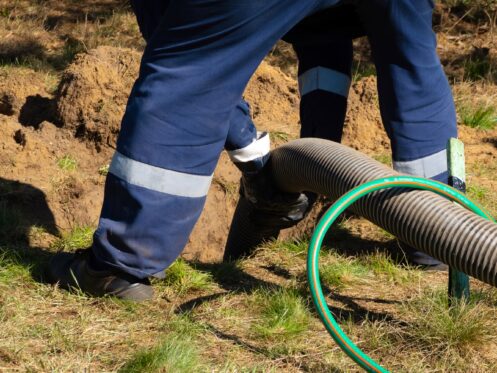A sewer emergency can turn a normal day into a stressful, messy scramble. You might notice foul smells, slow drains, or worse, water coming back up where it shouldn’t. At that moment, it’s hard to know what to do first. It’s important to stay calm and act fast to get things back on track with minimal damage.
Spotting the First Signs of Sewer Trouble
You don’t always get a warning before a sewer issue turns into a big mess, but your home might drop a few hints if you’re paying attention. Drains might start to empty more slowly than usual. Toilets might bubble when you use the sink. A foul smell could hang around your bathroom or basement even after you clean. These aren’t just annoyances. They’re early signs that something’s building up in your sewer line.
You might hear gurgling sounds when water drains. That noise means air is trapped behind something blocking the pipe. If several drains clog at once, or you notice sewage backing up into a shower or floor drain, your sewer line may be blocked. That’s not a small issue. Raw sewage in your home can cause damage fast. It’s not just dirty water; it carries bacteria, waste, and contaminants that make cleanup harder and risks your health.
In the early moments of a sewer emergency, the most helpful thing you can do is stop using water. That means no laundry, no flushing, and no showers. Any added water puts more pressure on the system and can push waste back into your home. While that pause won’t fix the issue, it can help limit how bad things get before a professional plumber arrives.
What Causes Sewer Lines to Suddenly Fail
Sewer lines fail for a few reasons, and some have nothing to do with anything you did. Older homes may still have clay, cast iron, or Orangeburg pipes underground. Those materials crack, shift, or collapse more easily than newer piping. If a pipe collapses, nothing moves through it at all. That stops wastewater from leaving and starts the backup.
Tree roots are another common problem. They grow toward moisture and can push into small cracks or joints in the pipe. Once inside, they keep growing and catch everything that moves through the line. This builds a blockage that slows drainage and eventually causes a full backup. Even a newer pipe can clog if nearby trees have aggressive root systems.
Sometimes, the issue comes from what’s been flushed or washed down the drain. Grease, wipes, paper towels, or hygiene products don’t break down like toilet paper. They stick to the inside of the pipes and collect debris. Over time, that mess turns into a clog that stops wastewater in its tracks.
Ground movement can also mess with your sewer line. Heavy rain, shifting soil, or nearby construction can pressure buried pipes. That pressure can cause cracks or joints to separate. Once that happens, dirt gets in, water leaks, and the pipe slowly breaks apart.
What to Do Right After a Backup Starts
When sewage comes up through your drains or toilet, it’s easy to panic. The first thing to do is try to keep the mess contained. If it’s just one drain, try not to flush other toilets or run water in other rooms. Keep kids and pets away from the area and avoid walking through the mess if you can help. Sewage can carry harmful bacteria, so stay out as much as possible.
If the mess reaches carpets, wood floors, or drywall, those areas may need to be removed. The faster you catch the problem, the more you can save. If the smell is strong, try opening windows. Fresh air helps, especially if you’re waiting for help to arrive. Don’t try to snake the drain or clear the blockage unless you know the full cause. If the pipe is broken or full of tree roots, forcing a tool down could worsen the problem.
If you have a main line cleanout cap in your yard, you can check it carefully. If sewage is spilling out there instead of into your home that means the pressure has somewhere to go. While still a mess, that’s usually better than flooding inside your walls or basement. You can also use that cap to confirm the backup is coming from the main sewer line and not just a single fixture.
The Cleanup Process After a Sewer Line Backup
Sewer backups leave more behind than water. Once the problem is fixed, cleanup has to happen quickly. You’ll need to dry the area, disinfect everything, and possibly remove items that soaked up contaminated water. Things like carpet, drywall, and insulation usually can’t be cleaned well enough and should be replaced. Hard surfaces like tile or concrete can be disinfected, but it takes careful work to do it right.
You should also check if the backup caused damage that isn’t visible right away. Water can get under the flooring, behind the baseboards, or inside wall cavities. If left alone, that moisture can lead to mold growth. Even if the area seems dry on the surface, moisture meters or thermal cameras can help find hidden damp spots.
If a professional crew handles the cleanup, they’ll use protective gear, specialized tools, and proper cleaning solutions to make the area safe again. They’ll also haul away damaged items, ventilate the space, and run fans or dehumidifiers to dry things out fully. Cleaning up a sewer mess is hard work, but doing it thoroughly helps keep your home healthy.
How a Sewer Camera Inspection Helps
The next step after a backup is figuring out what caused it. A sewer camera inspection gives you a clear view inside the line without digging. A technician feeds a small camera into the pipe through a cleanout. That camera travels through the sewer line and returns video to a screen. With that view, you can see cracks, clogs, root intrusion, or full collapses.
This kind of inspection helps you understand what repairs are needed. If it’s just a blockage, the technician might use a hydro jet to clear the pipe. If roots are inside, cutting them out is possible with the right tool. But digging and replacing a section may be the only fix if the camera shows a break or a sag in the line.
Deciding Between Repair and Replacement
Not every sewer line issue means you need to dig up your yard. Sometimes, the problem is small enough that a repair works fine. If there’s just one broken joint or a small root blockage, targeted pipe repair can get your system working again. That might mean digging up a short section of pipe or using a trenchless liner to patch the inside of the pipe.
But in some cases, the damage is too wide or the pipe is too old to patch. If the camera shows the line is full of cracks, off-center joints, or crushed sections, replacing the full length might be smarter. It’s a bigger job, but it helps you avoid future surprises. New materials like PVC hold up longer and are less likely to crack, shift, or attract roots.
A technician will usually discuss both options with you. They’ll help you weigh the cost, the age of your current pipe, and whether another backup is likely soon. Repair might be cheaper now, but replacement can be a better choice if your line has reached the end of its life.
Clean Up Your Sewer Today
Our team of plumbers offers reliable sewer services as well as drain cleaning, pipe cleaning, and bathroom and kitchen plumbing services. Call Bryant Heating, Cooling, Plumbing & Electric in Louisville, KY when your sewer needs fixing, fast.



